How to Rock Blog Management In 5 Easy Steps (Includes Checklist)
 So – you’ve got a blog! Congratulations.
You’re one of 547,200 new sites on the internet today. And that “Hello World” introduction post? Yeah, it’s one of the daily 4.4 million blog posts sent off into the ether with the click of the Publish button.
If those numbers seem pretty discouraging, don’t worry. Only 2% of all blogs stay active.
That’s only about 2,700 of those new blogs that cropped up today – if we believe the statistic that a quarter of all sites on the internet are blogs.
In this sea of new content swelling the pages of Google, how on earth will you ever climb to the top?
The answer is actually pretty simple: good blog management.
While there are plenty of services out there that you can hire to take over your blog management, solopreneurs tend to be a pretty DIY bunch. So, we’ve created this guide on rocking blog management like a pro.
Ready to get started? Here’s how to join the ranks of that glorious 2% and climb to the top of Google with proper planning, consistent publishing, and a rock-solid workflow that doesn’t miss a beat.
So – you’ve got a blog! Congratulations.
You’re one of 547,200 new sites on the internet today. And that “Hello World” introduction post? Yeah, it’s one of the daily 4.4 million blog posts sent off into the ether with the click of the Publish button.
If those numbers seem pretty discouraging, don’t worry. Only 2% of all blogs stay active.
That’s only about 2,700 of those new blogs that cropped up today – if we believe the statistic that a quarter of all sites on the internet are blogs.
In this sea of new content swelling the pages of Google, how on earth will you ever climb to the top?
The answer is actually pretty simple: good blog management.
While there are plenty of services out there that you can hire to take over your blog management, solopreneurs tend to be a pretty DIY bunch. So, we’ve created this guide on rocking blog management like a pro.
Ready to get started? Here’s how to join the ranks of that glorious 2% and climb to the top of Google with proper planning, consistent publishing, and a rock-solid workflow that doesn’t miss a beat.
Manage Your Blog With This Workflow Checklist + Calendar Template
Managing your blog effectively is easier when you have the right tools. Download this workflow checklist + calendar template kit to plan your process and organize your posts:How to Rock Blog Management In 5 Easy Steps (Includes Checklist)
Click To Tweet1. Take 30 Minutes to Generate Ideas
Before you can get started writing, you first need to have ideas. However, ideas aren’t always easy to find. In fact, coming up with ideas for your blog may be one of the hardest things that you do as a solopreneur – but you’re going to have to get used to doing it constantly if you want to be successful at blogging and blog management. If you’re struggling, don’t worry. Getting stumped in the idea generation phase has afflicted people for so long that scientists have conducted research to determine just why we seem to constantly suffer from creative blocks (hint: brain chemistry). Fortunately, based on this science, we also now know that there a few things you can do to “trick” your brain into bumping up the creativity. That’s the purpose of brainstorming, and there’s also quite a bit of scientific evidence out there that it works when done correctly. Creative blocks are essentially an argument between two parts of your brain resulting in a cognitive deadlock (read about it below). To break down this deadlock, follow this simple recipe that takes 30 minutes to perform:1. Spend 10 Minutes Writing Down Every Idea You Have
Set a timer for 10 minutes, grab your pencil, and start making a list. Write down everything that comes to mind without a thought as to whether or not the idea is a good one. It might help to start with one concept then write down all the associations you have with that concept rather than thinking of “blog topic ideas” per se. You can also do this with blog categories or themes.2. Spend 10 Minutes Rating Each Idea
When your first 10 minutes are up, reset your timer. Now, go down your list and rate each as a 1, 2, or 3 – with 3 being your favorite ideas.3. Spend 10 Minutes Deciding Which Ideas to Write
Once you’ve sorted your list, spend a final 10 minutes going through it determining which ones you’ll write. That could be all of your number 1 ideas, or it could be a combination of them depending on how well the topics flow together. Still having trouble? That’s alright. You can also use this process while curating content to identify suitable topics for your blog.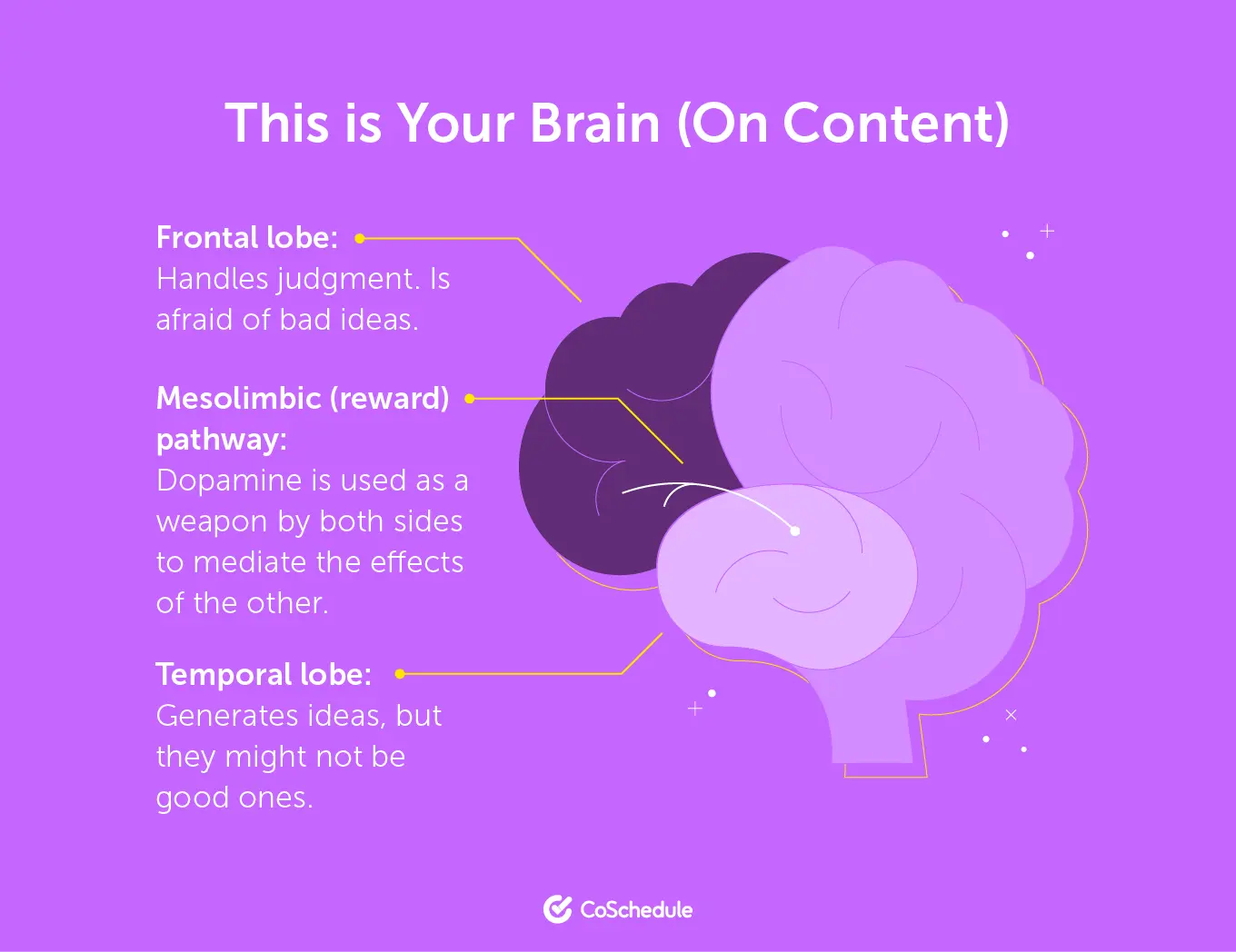 Creativity is one of the defining features of humans but, like with cats, it can occasionally get us killed. As a result, the brain developed a defense mechanism to reduce the ability of early humans to conceive (and thus act upon) very bad ideas. The activation of that defense mechanism is what you’re experiencing whenever you feel a creative block.]
Creativity is one of the defining features of humans but, like with cats, it can occasionally get us killed. As a result, the brain developed a defense mechanism to reduce the ability of early humans to conceive (and thus act upon) very bad ideas. The activation of that defense mechanism is what you’re experiencing whenever you feel a creative block.]
2. Schedule Your Blog Posts
Once you’ve got your collection of blog posts title it might be tempting to start writing them all at once. After all, you’ve got so many amazing ideas now and your creativity is on full blast! Resist the urge. It’s time to rein in those creative juices and stop suppressing your frontal lobe with dopamine. Do that by creating a blogging schedule. It will make your frontal lobe very happy. To schedule your blogs:First, Figure Out Your Time Commitment
Blogging is much more than simply typing up a post and throwing it online. Crafting a thoughtful, well-written blog post takes time, energy, and a whole lot of research to do it well. How much time that takes you will vary according to your topics. You’ll also need to balance your publishing frequency with your other time constraints. Running a brick and mortar retail location? Got kids? You might not have enough hours in the day to publish an in-depth, authoritative post daily. A realistic grasp of how much time it will take you to post, and how much time you actually have, is the first step to creating an effective blogging schedule. (PS – don’t be afraid to start slow. Consistency is more important than volume.)Then, Identify Your Blogging Goals
What are you trying to get out of your blog? Depending on your business, that may vary. Some common goals include:- Improving your page rank for local SEO or specific keywords.
- Growing your audience and developing authority in an industry over time.
- Gaining [x] amount of new email subscriptions or sales in a certain amount of time.
- Increase content related to a certain topic overall.
Finally, Use a Calendar for Topics and Categories
Using an Editorial Calendar, like CoSchedule is a best practice that has several major advantages – not the least of which is preventing the burnout you’ll invariably feel from trying to do everything at once. A calendar is also a useful visual tool to help you spot holes, inconsistencies, or patterns in your scheduling. It will help you stay focused and efficient. For blog management purposes, you can even take it a step further. Use a calendar to track categories, hashtag usage, or themes that you’re posting about. Check out what one of our templates looks like all filled out…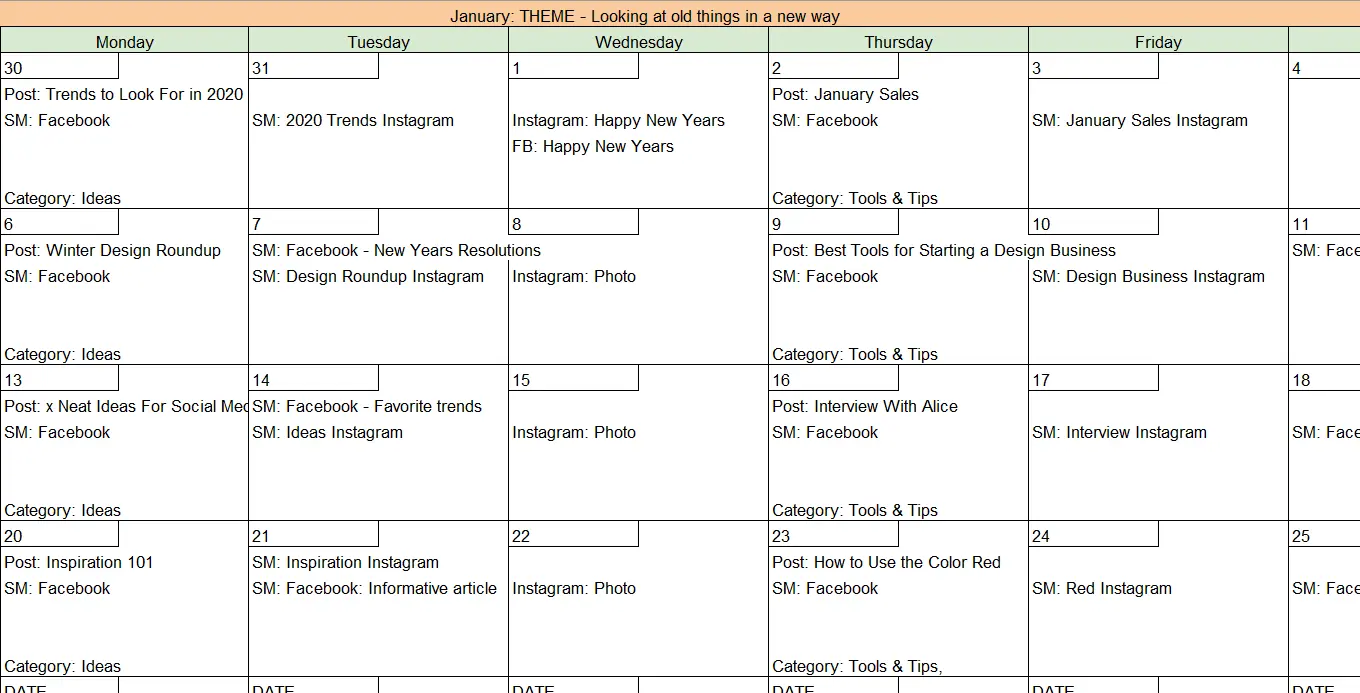 A calendar template like this one can help you plan out not just topics, but category usage, blog tags, and your social media around each blog post. Find a bunch of useful templates right here.
A calendar template like this one can help you plan out not just topics, but category usage, blog tags, and your social media around each blog post. Find a bunch of useful templates right here.
3. Create a Checklist-Based Workflow for Writing Posts
Once you’ve created your calendar, streamline it with a checklist. This will ensure that you don’t miss any critical details when you draft your blog articles. Some things that you’ll want your blog management workflow checklist to include are…- Tags, categories, and SEO keywords. Know them before you start – they will help focus your writing.
- Outline. An outline keeps each section balanced and shows you how the blog fits together.
- A strong, focused introduction. You’ll want to nail it for success.
- First draft. It’s easier to edit than write, so focus on completing the post first.
- Call to action at the end. Strong blogs have a CTA to drive engagement.
- Headline Analyzer Studio score. You’ll know right away if you’ve got a good one.
- Yoast content analysis. Check your keyword usage and adopt SEO best practices.
- Grammarly check. It will spot the mistakes you (or Word) missed.
- Images. Does your blog need any? Add them.
- Approval. If you work with clients or have multiple people who look over each post before publication, you’ll need their input.
- Final editing. Always double check your work to make sure it’s perfect.
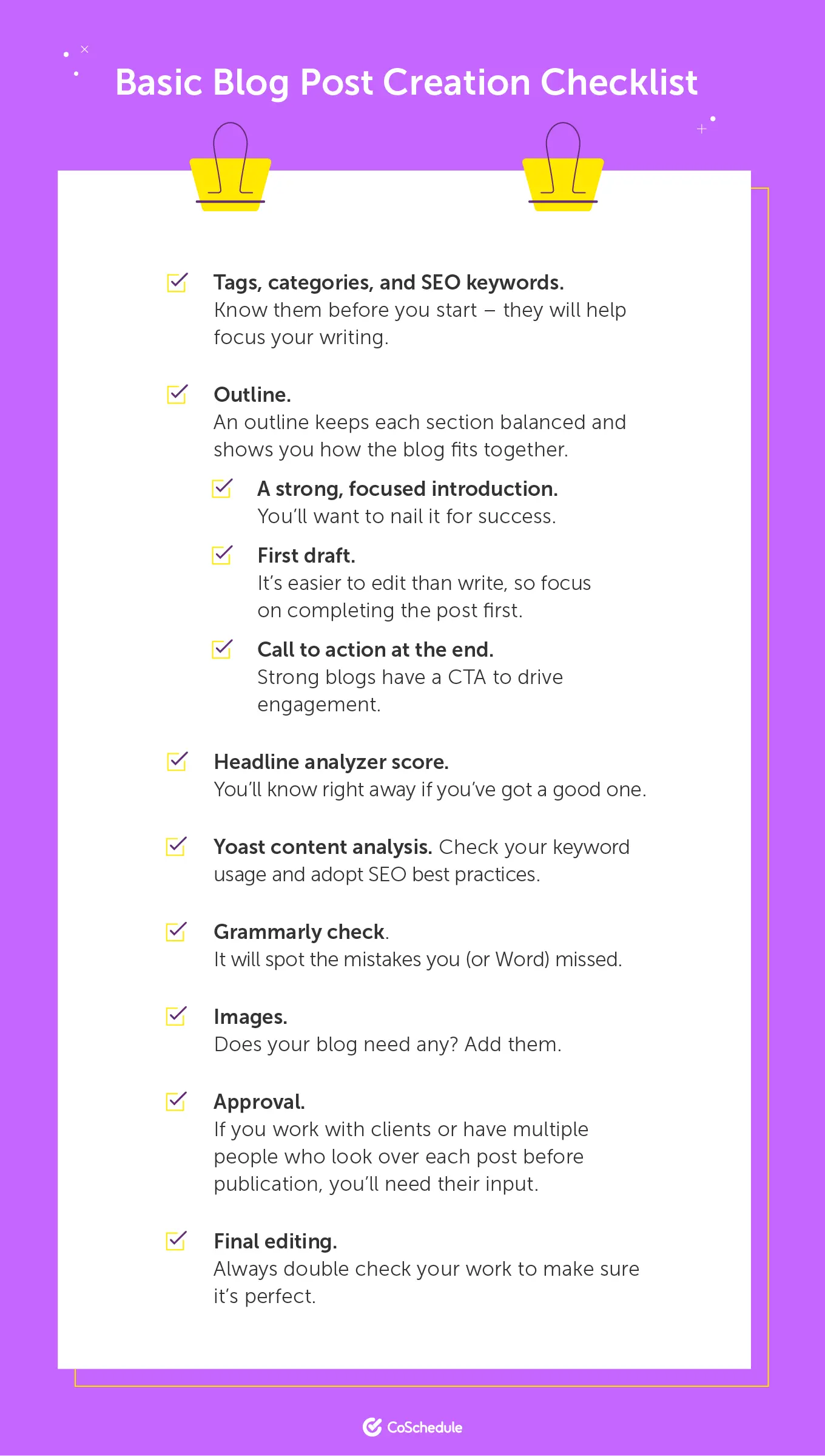 While this checklist is designed for blog management, here’s a more detailed checklist you can follow when writing each actual blog.
While this checklist is designed for blog management, here’s a more detailed checklist you can follow when writing each actual blog.
4. Use Yoast to Edit the Title, Tags, and Meta Descriptions
So, you’re ranking on Google. Your blogs are insightful, funny, and well-written – a goldmine of knowledge just waiting to be found. Good blog articles take more than just creative genius and the right SEO keywords. A strong title, the right tags, and eye-catching meta descriptions are exactly the hook you need to pique a person’s curiosity. There are a lot of different tools out there to help you hone your meta information. One of our favorites is Yoast. Yoast is a freemium WordPress plugin that analyzes your SEO game right there in the blog post. It walks you through SEO best practices and offers tips to improve the searchability and readability of your post. In the event you’re not using WordPress, they’ve also created a Real-Time Content Analysis page into which you can paste your blog text and check your title, keywords, and meta description.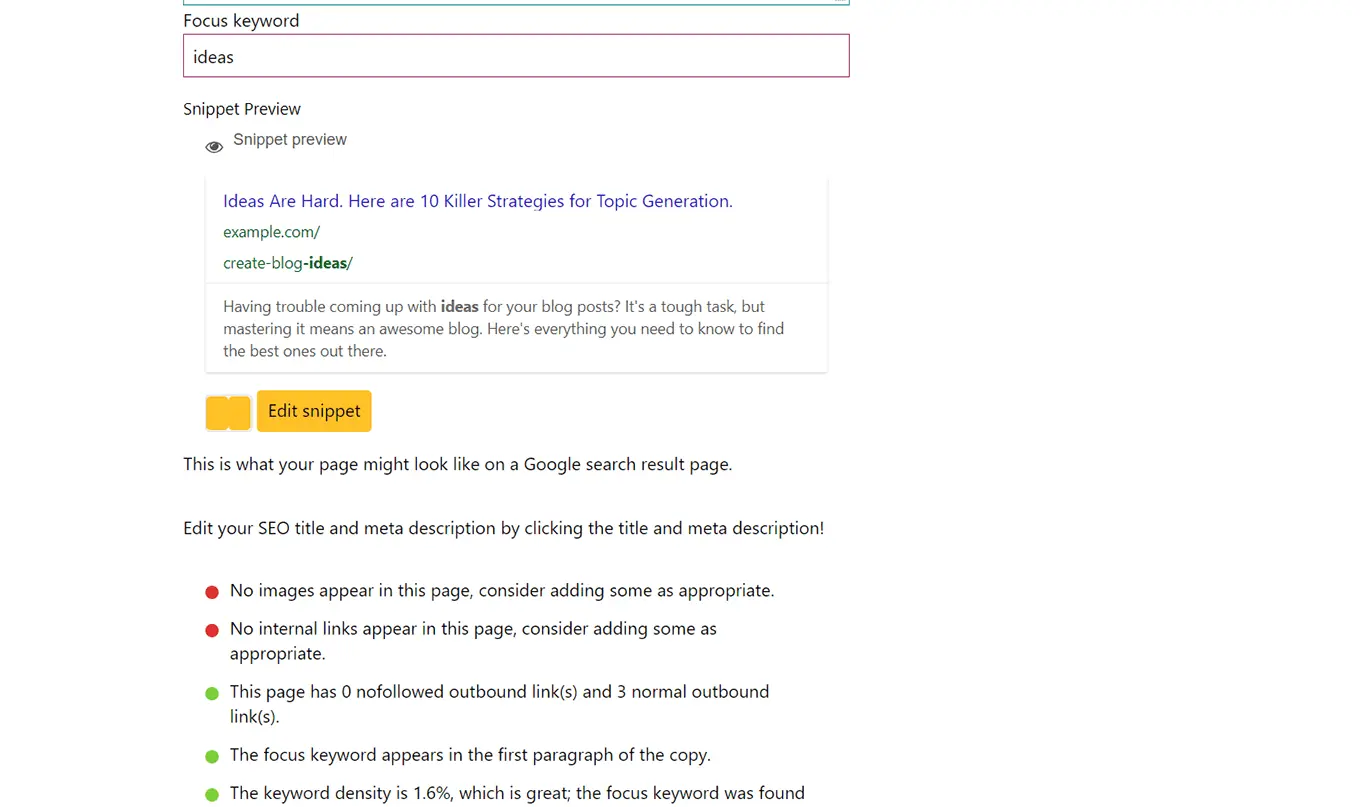 Yoast will let you know how you’re doing with SEO and provide helpful tips to improve your blog articles.
Yoast will let you know how you’re doing with SEO and provide helpful tips to improve your blog articles.
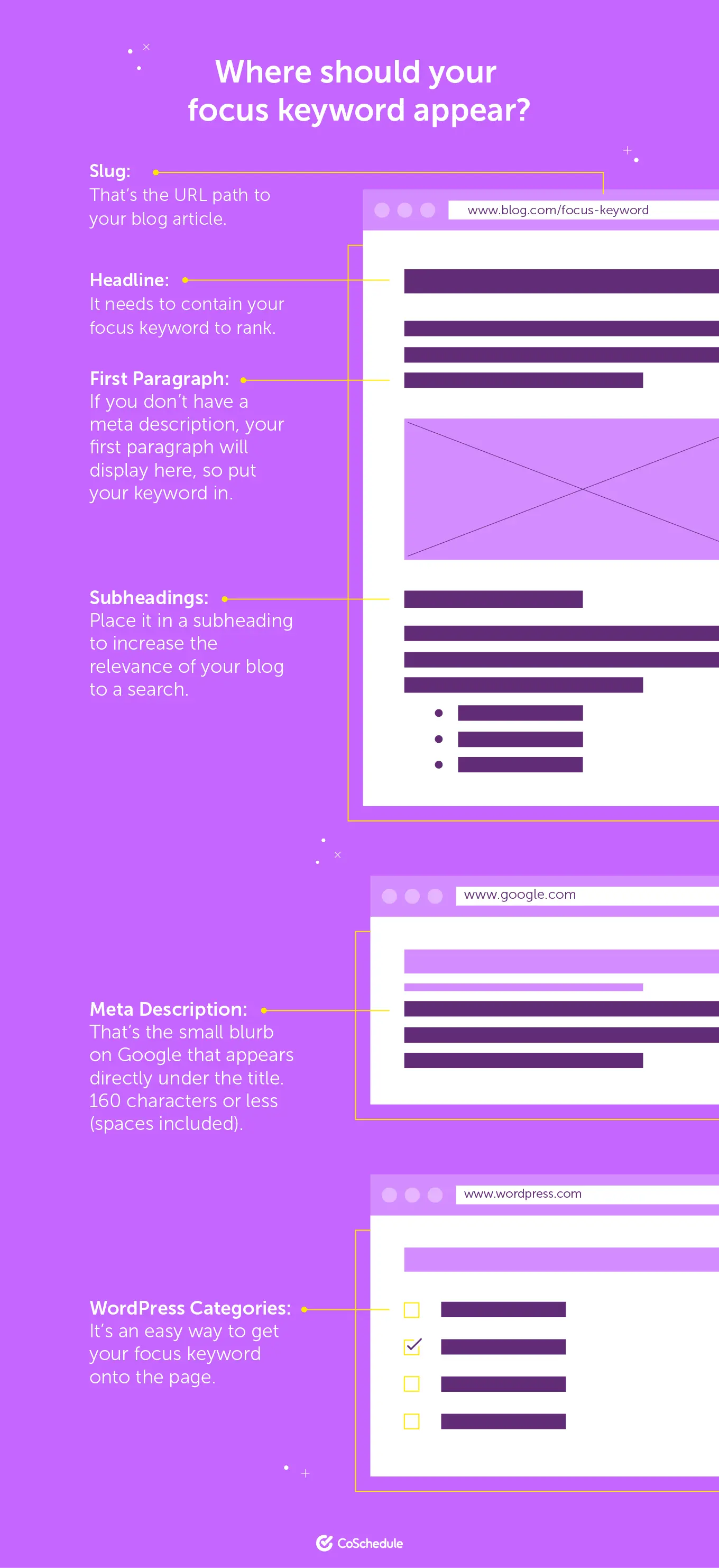
5. Create Templates for Social Media Promotion
Social media promotion is a powerful way to drive readership and engagement with your blog. (Actually, it’s imperative for your brand’s success. If you aren’t on social media, you need to be.) However, it’s also one of the biggest time sucks out there. The latest reports estimate that we spend about two and a half hours on social media every day. (At least 72% of Americans use social media.) As a solopreneur, you’re already doing all the heavy lifting involved in running your business – you don’t have time to spend two hours every day on your company’s social media. So, don’t. CoSchedule puts into your hands the tools you need to schedule perfect social media promotions without you actually being there. That tool is called Social Templates, and it’s about to be your best friend. When you create a social media template, you use “helpers” to pull specific pieces of information from that blog post you just created. Our algorithms will drop that information into a template and push it to your social media platform on a predetermined schedule. There! Social media promotions now get done while you catch up on sleep.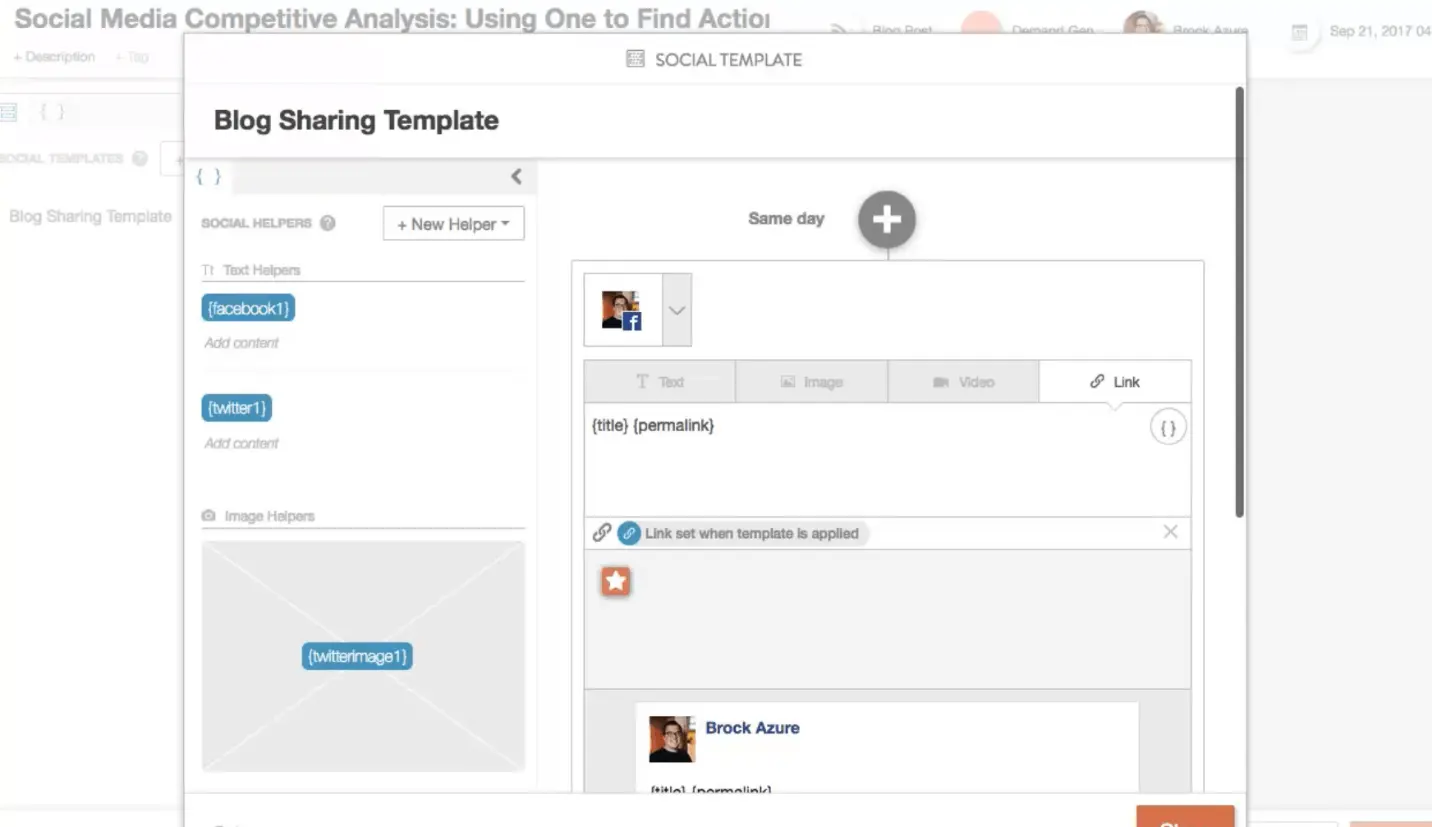
Plan and Execute Your Blog Management Like a Pro With CoSchedule
As you can see, blog management requires a fair bit more than simply coming up with a few ideas, throwing together a blog, and adding it onto your site. In addition to crafting your latest piece of insight, you’ve got to worry about SEO, social media promotion and, of course, keeping all of it consistent. To help simplify your blogging strategy, check out Actionable Marketing Institute's Marketing Basics Bootcamp. This 8-course Marketing Basics Bootcamp breaks down exactly how bloggers & content marketers can grow their blogs using SEO, social promotion, copywriting best practices, & so much more!
Today, blog readers can enroll for only $59 (over 60% off!) with code BLOG at checkout.
This 8-course Marketing Basics Bootcamp breaks down exactly how bloggers & content marketers can grow their blogs using SEO, social promotion, copywriting best practices, & so much more!
Today, blog readers can enroll for only $59 (over 60% off!) with code BLOG at checkout.


